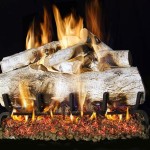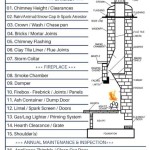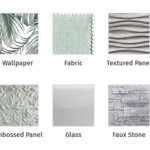Installing A Wood Burning Fireplace Insert: A Comprehensive Guide
A wood-burning fireplace insert is a self-contained heating appliance designed to be installed within an existing masonry fireplace. It offers improved heating efficiency compared to an open fireplace, reducing heat loss up the chimney and radiating warmth directly into the room. However, the installation process requires careful planning, proper tools, and a thorough understanding of building codes and safety regulations.
Before embarking on the installation, a comprehensive assessment of the existing fireplace and chimney is crucial. This assessment should include an inspection for structural integrity, proper sizing for the selected insert, and confirmation that the chimney is clean and free of obstructions. Ignoring this preliminary step can lead to inefficient operation, dangerous conditions, and costly repairs.
Choosing the right wood-burning fireplace insert is crucial for optimal heating performance and safety. Factors to consider include the size of the area to be heated, the efficiency rating of the insert, the size of the firebox, and the overall aesthetics. It’s also essential to ensure the insert meets all applicable EPA (Environmental Protection Agency) emission standards and local building codes.
Key Point 1: Preparing the Fireplace and Chimney
The preparation phase is arguably the most critical step in the installation process. This involves meticulously cleaning the existing fireplace and chimney, ensuring they are structurally sound, and preparing the hearth to adequately support the weight of the insert. Failing to properly prepare the fireplace and chimney can compromise the safety and efficiency of the insert.
Start by removing any existing fireplace accessories, such as grates, screens, and decorative elements. A thorough cleaning of the firebox is essential. Use a wire brush and a vacuum cleaner to remove creosote, soot, and debris from the firebox walls and floor. Special attention should be paid to removing any loose or crumbling mortar.
The chimney must also be thoroughly cleaned to remove creosote buildup. Creosote is a flammable byproduct of burning wood and can accumulate in the chimney over time. A creosote buildup poses a significant fire hazard. It is recommended to hire a professional chimney sweep to perform this task, as they have the necessary tools and expertise to ensure a complete and safe cleaning.
Inspect the chimney for any cracks, gaps, or other signs of damage. Even minor damage can compromise the structural integrity of the chimney and allow dangerous gases to leak into the home. If any damage is found, it must be repaired before proceeding with the installation. This may involve patching cracks, re-mortaring joints, or even relining the chimney with a stainless-steel liner.
Check the size and dimensions of the existing fireplace opening to ensure that the selected insert will fit properly. Measure the width, height, and depth of the opening and compare these measurements to the insert's specifications. It is important to allow for adequate clearance around the insert for proper ventilation and heat dissipation.
The hearth must be capable of supporting the weight of the insert. A typical wood-burning fireplace insert can weigh several hundred pounds, so it is important to ensure that the hearth is structurally sound and level. If the hearth is weak or uneven, it may need to be reinforced or leveled before the insert is installed.
Key Point 2: Installing the Chimney Liner and Connecting the Insert
A critical element of installing a wood-burning fireplace insert is the chimney liner. A properly sized and installed liner serves as a dedicated exhaust pathway, ensuring efficient venting and preventing dangerous gases from leaking into the home. Selecting the right liner and connecting the insert to it requires precision and adherence to manufacturer instructions.
The chimney liner is typically made of stainless steel and should be sized to match the flue outlet of the wood-burning fireplace insert. Consult the insert’s manual for the recommended liner diameter. A liner that is too small can restrict airflow and cause the insert to smoke, while a liner that is too large can allow creosote to condense and accumulate.
The chimney liner is typically installed from the top of the chimney and lowered down to the fireplace opening. This may require removing the chimney cap and carefully maneuvering the liner down the chimney. It is important to ensure that the liner is properly insulated to prevent heat loss and condensation.
Once the chimney liner is in place, it needs to be connected to the flue outlet of the wood-burning fireplace insert. This is typically done using a connector pipe that is specifically designed for this purpose. The connector pipe should be securely attached to both the liner and the insert using clamps or screws.
Before connecting the insert, ensure the fireplace opening is properly sealed. This prevents air leaks and ensures that all combustion gases are directed up the chimney. Use a high-temperature sealant to fill any gaps or cracks around the insert and the fireplace opening.
Carefully slide the wood-burning fireplace insert into the fireplace opening, ensuring that it is centered and level. Connect the connector pipe to the flue outlet of the insert and secure it with clamps. Check all connections to ensure they are tight and leak-proof.
Key Point 3: Completing the Installation and Testing the Insert
After physically installing the insert and connecting the chimney liner, several crucial steps remain to ensure safe and efficient operation. These include properly sealing the surround, verifying adequate airflow, and conducting a test burn to confirm functionality and safety.
The surround is the decorative panel that covers the gap between the insert and the fireplace opening. It should be securely attached to the fireplace using screws or other fasteners. Ensure the surround is made of non-combustible materials, as it will be exposed to high temperatures.
Verify that the insert has adequate airflow for combustion. Check the air intake vents on the insert and ensure they are not blocked by debris or furniture. Proper airflow is essential for efficient burning and preventing the buildup of dangerous gases.
Before using the insert for regular heating, conduct a test burn to ensure it is functioning properly. Start with a small fire and gradually increase the amount of wood. Observe the chimney smoke to ensure it is drafting properly. Monitor the temperature of the insert and the surrounding area to ensure there are no signs of overheating.
During the test burn, check for any signs of smoke leaking into the room. If smoke is detected, immediately extinguish the fire and investigate the source of the leak. This could be due to a faulty connection, a cracked chimney liner, or an inadequate seal around the insert.
Consult the manufacturer's instructions for specific guidelines on operating and maintaining the wood-burning fireplace insert. This includes recommendations for the type of wood to use, the proper way to load the firebox, and the frequency of chimney cleaning.
Consider hiring a qualified professional to inspect the completed installation and ensure it meets all applicable building codes and safety regulations. A professional inspection can provide peace of mind and help prevent potential problems in the future.
Installing a wood-burning fireplace insert is a significant undertaking that requires careful planning, attention to detail, and a thorough understanding of safety regulations. By following these guidelines and taking the necessary precautions, homeowners can enjoy the warmth and efficiency of a wood-burning fireplace insert safely and effectively.
Regular maintenance of the fireplace insert and chimney is crucial for maintaining its efficiency and safety. This includes cleaning the chimney regularly to remove creosote buildup, inspecting the insert for any signs of damage, and replacing worn parts as needed. Neglecting maintenance can lead to reduced heating efficiency, increased fire risk, and costly repairs.
Choosing the right type of wood for burning is also important. Seasoned hardwoods, such as oak, maple, and ash, are generally the best choice. These woods burn hotter and longer than softwoods, such as pine, and produce less creosote. Avoid burning green wood, as it contains a high moisture content and produce excessive smoke and creosote.
Operating a wood-burning fireplace insert safely requires following some basic guidelines. Never leave a fire unattended, and always keep a fire extinguisher nearby. Install smoke detectors and carbon monoxide detectors in the home and check them regularly. Never burn trash, paper, or other materials in the fireplace, as this can produce toxic fumes and increase the risk of a chimney fire.

How To Install A Fireplace Insert Diy Save Money
Wood Stoves And Fireplaces How To Install A Burning Fireplace Insert Hearth Com Forums Home

Custom Installation Of Fireplace Inserts Insert Installations Sierra Hearth And Home

Wood Fireplace Insert Installation Overview By Rockford Chimney Supply

Lodi Wi Installing Fireplace Insert Remodel

Fireplace Insert Installation Wood Inserts Gas Pellet And Electric

Wood Burning Fireplace Inserts Installation In Augusta Ga Aiken Sc

Fireplace Inserts Everything You Need To Know Full Service Chimney

Wood Burning Fireplace Inserts Insert Installation

Wood Burning Fireplace Inserts Installation In Augusta Ga Aiken Sc








